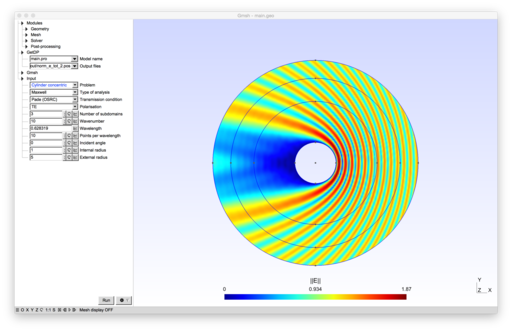|
|
 |
FonSinEM is Freeware based on the FDTD method.

LIP2016
The 11th international conference series on Laser-light and Interactions with Particles (LIP2016) which will be held from April 22 to 26, 2016 in Xi'an, China.

T-DDA (thermal discrete-dipole approximation)
The T-DDA calculates the steady-state temperature distribution within and surrounding an externally-illuminated target immersed in a homogeneous background medium.
GetDDM combines GetDP and Gmsh to solve large scale finite element problems using optimized Schwarz domain decomposition methods.

Series: ScattPort Series, Vol. 2
Wriedt, Thomas (Ed.)
Light Scattering by Complex Particles
epubli, Berlin 2015, Softcover 24,90 €
ISBN: 9783737571937

OTS Optical Tweezers Software
OTS is comprehensive MatLab software toolbox to work with optical tweezers by Philip H. Jones, Onofrio M. Maragò & Giovanni Volpe.

PAME
PAME (Plasmonic Assay Modeling Environment) by Adam Hughes is a graphical Python application for simulating plasmonic biosensors, particularly fiberoptic biosensors with nanoparticles.

py_gmm: Generalized Multiparticle Mie code
A Fortran 90 implementation of the Generalized Multiparticle Mie method by Giovanni Pellegrini, especially suited for plasmonics and near field computation.

for90-MoM2
for90-MoM2 by Jouni Mäkitalo is a Method of Moments electromagnetic wave scattering solver implemented in Fortran 90 for EM scattering from dielectric/lossy/plasmonic/PEC objects.

|
|
 |
|